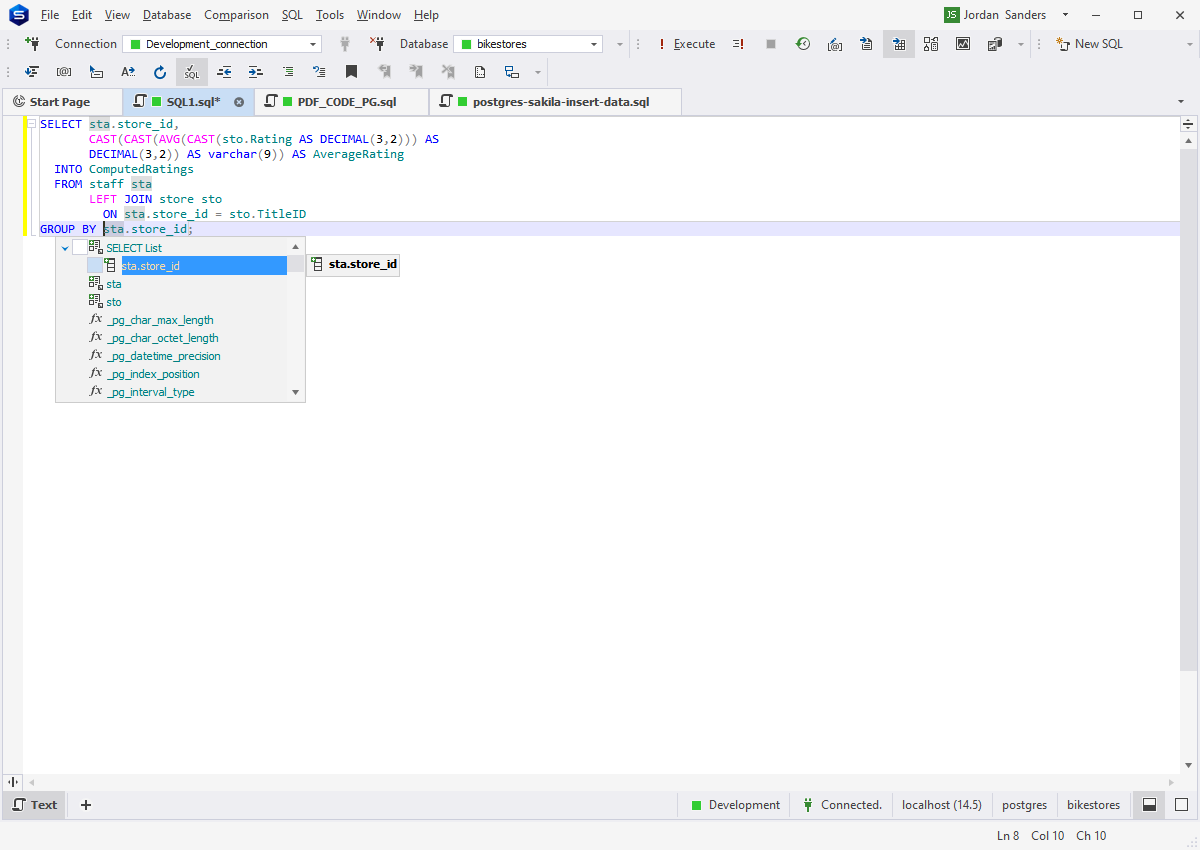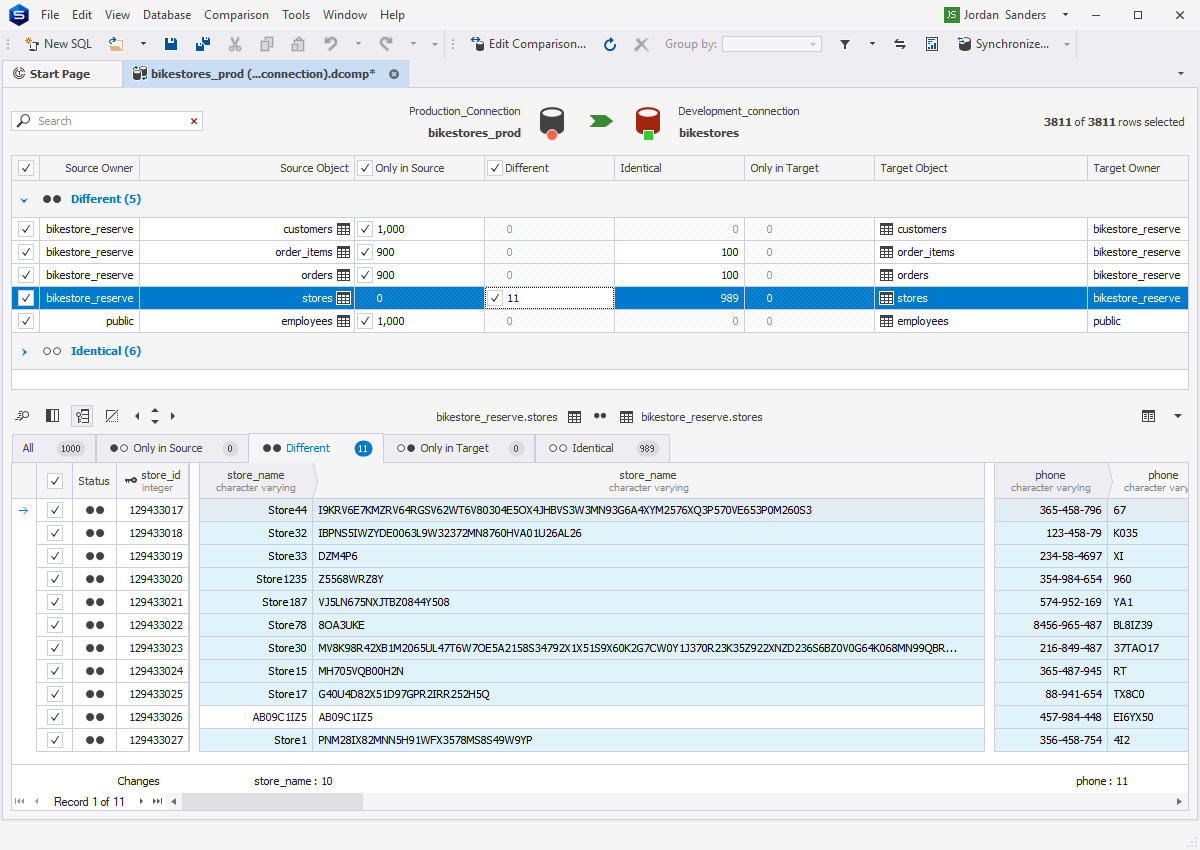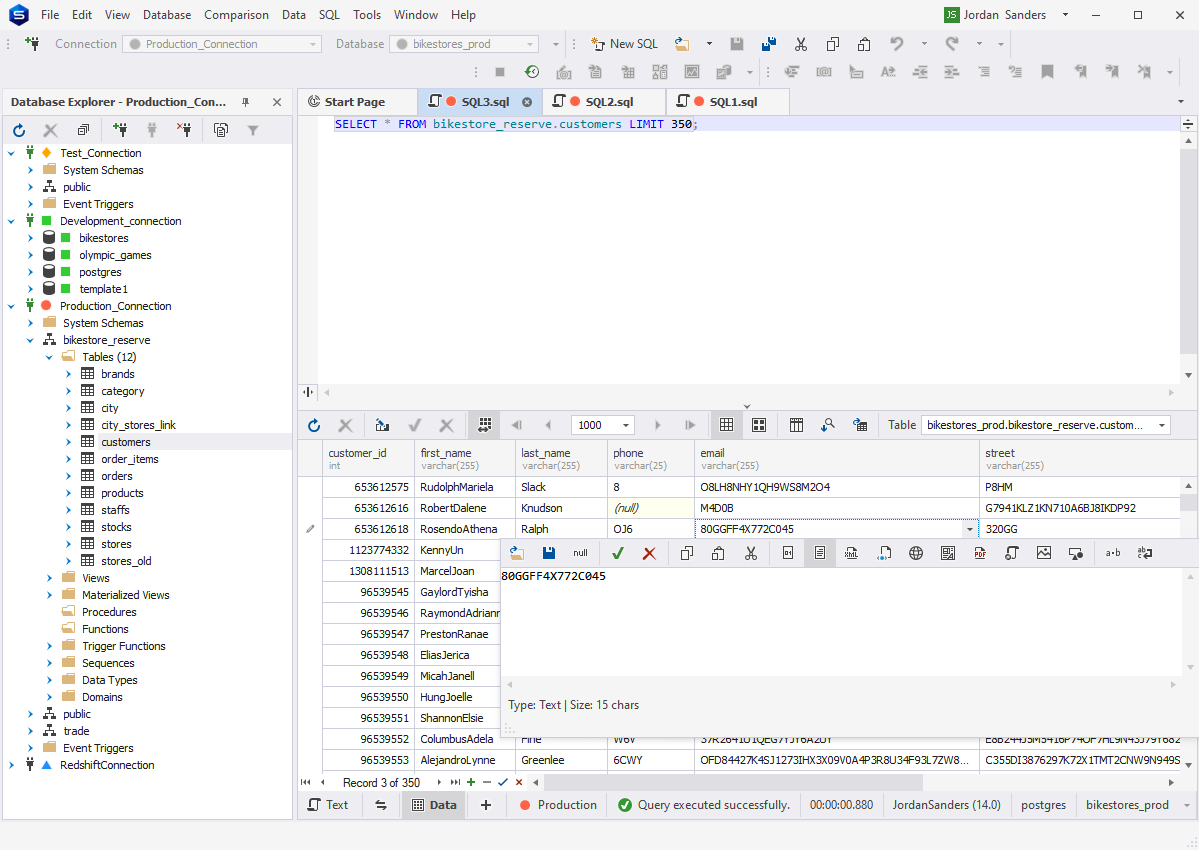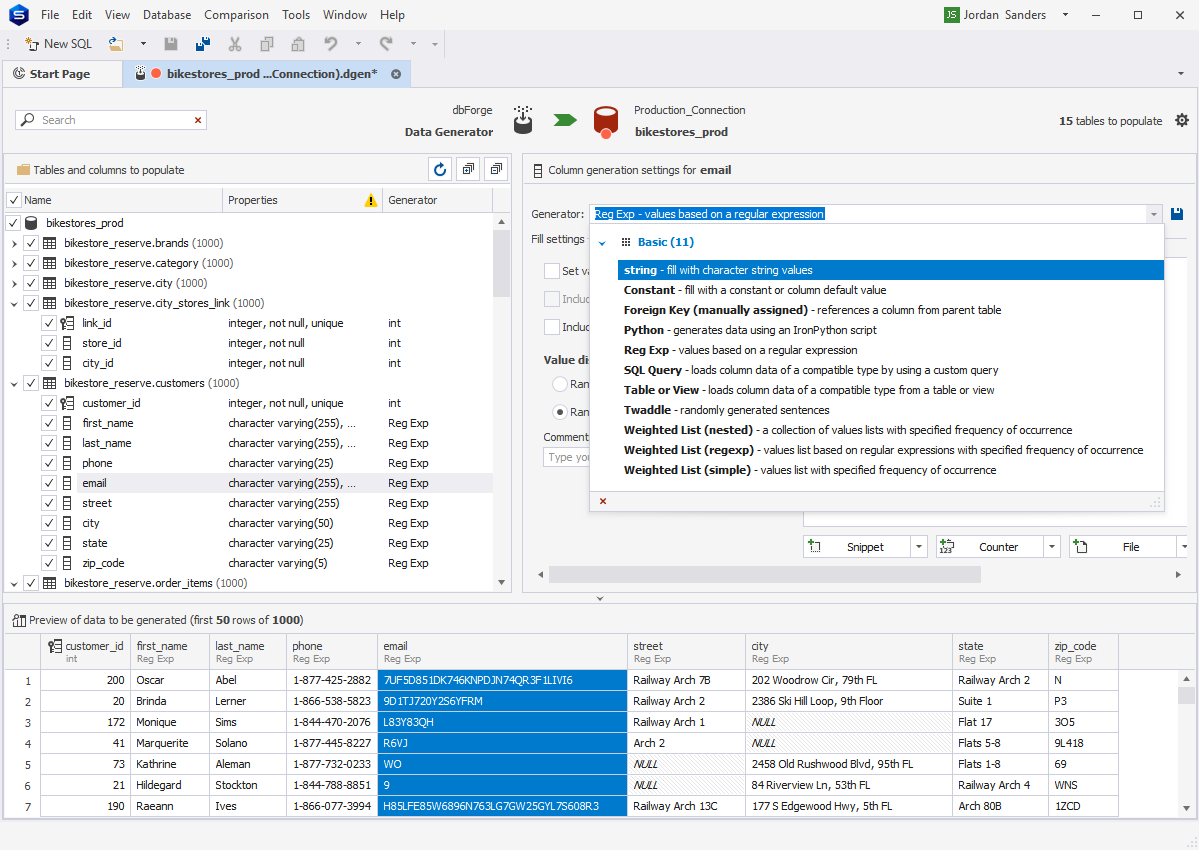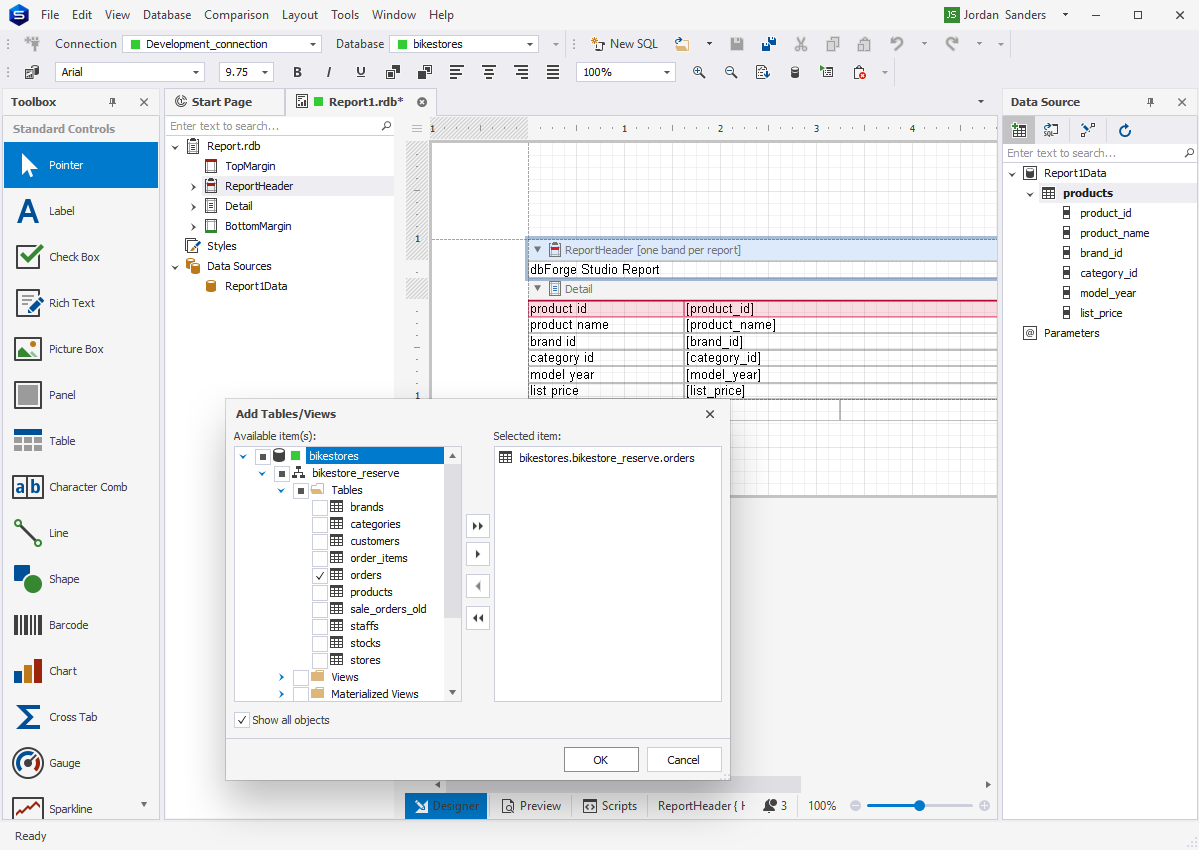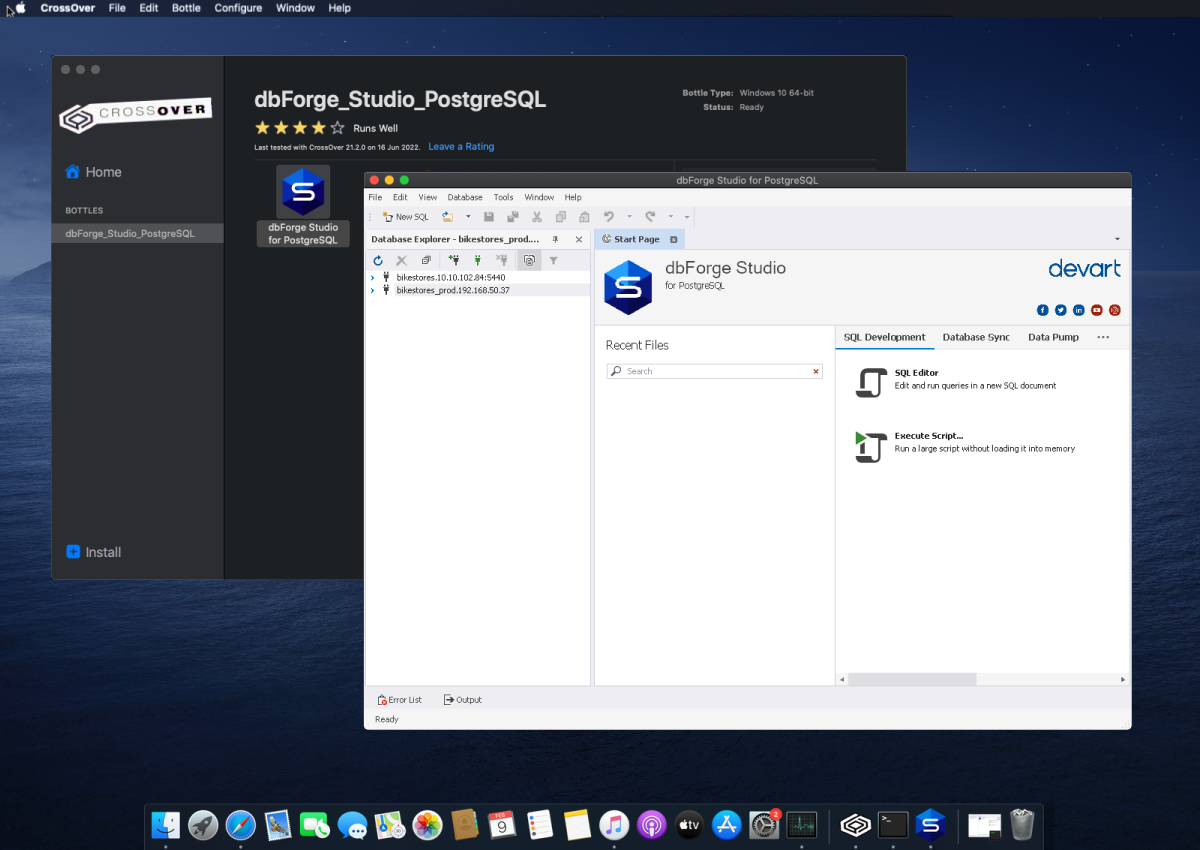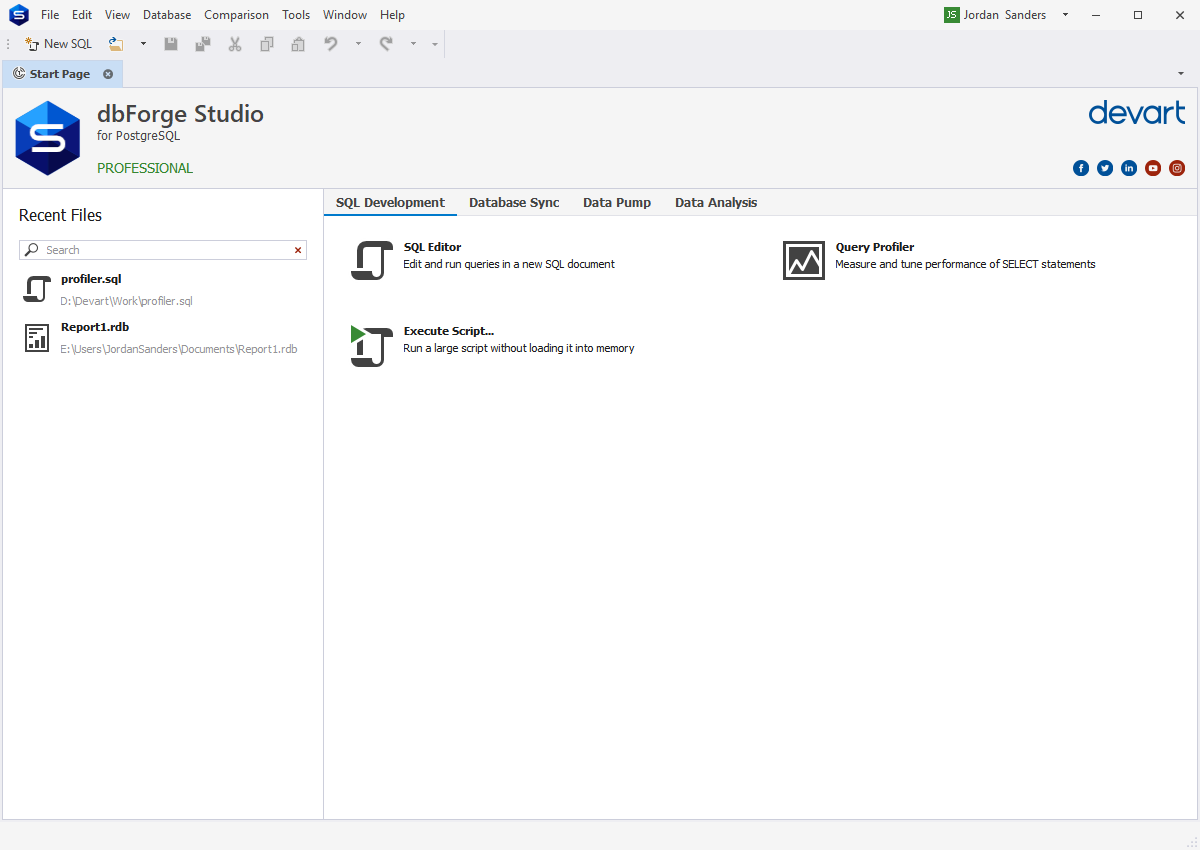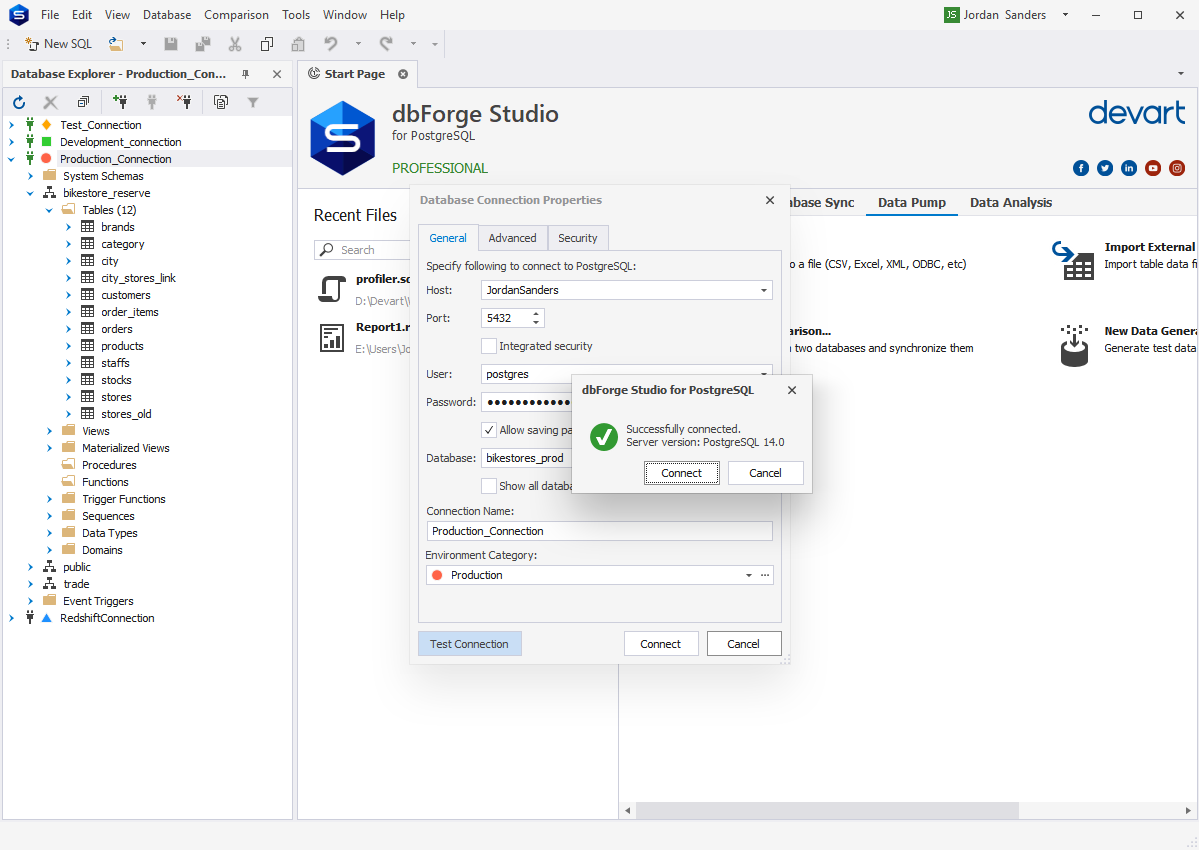Getting started with dbForge Studio for PostgreSQL
Tune up and streamline your daily workflow with the most comprehensive PostgreSQL GUI tool that is designed to help you effortlessly handle a wide variety of database development, management, and administration tasks.
What is PostgreSQL?
PostgreSQL is an advanced open-source relational database management system with over 35 years of active development. It uses and extends the Structured Query Language combined with multiple features that can safely store and scale even the most complicated data workloads. Over the years, PostgreSQL has earned a strong reputation for its proven architecture, reliability, data integrity, robustness, extensibility, high performance, and compatibility with all major operating systems.
PostgreSQL proved to be the optimal choice for numerous software solutions thanks to the following specifics:
-
The open-source nature of PostgreSQL makes it suitable for any type of software project, whether commercial or not.
-
PostgreSQL is a cross-platform DBMS that works across Windows, Linux, and macOS, which means it's open to the widest array of software projects, regardless of their business domain.
-
It is very easy to learn the basics of PostgreSQL.
-
If you work with PostgreSQL, you don't have to worry about licensing.
-
PostgreSQL is a highly extensible database system; if its default functionality lacks something you need, you can fill in the gaps by installing third-party extensions or even building your own.
Key features of PostgreSQL
Needless to say that PostgreSQL has accumulated a rich set of features, including, but surely not limited to the following:
-
Full ACID compliance
-
Support for numerous data types
-
Views, rules, subqueries
-
Primary keys, foreign keys, exclusion constraints
-
Explicit locks, advisory locks
-
Table partitioning
-
Advanced indexing
-
Nested transactions via savepoints
-
Multi-version concurrency control (MVCC)
-
Query planner/optimizer, index-only scans, multicolumn statistics
-
Write-ahead logging (WAL)
-
Point-in-time recovery (PITR)
-
Asynchronous, synchronous, and logical replication
-
Tablespaces
-
Authentication: GSSAPI, SSPI, LDAP, SCRAM-SHA-256, Certificate, etc.
-
Robust access-control system
-
Column-level and row-level security
-
Support for Unicode, international character sets, and multi-byte character encodings
-
Countless extensions that deliver additional functionality
dbForge Studio: The best PostgreSQL GUI client on the market
Now, what's the best way to put all this functionality into service? We bet you'd love to have a single application that would contain all the essential tools for your regular operations with PostgreSQL databases, and it would be very easy to use.
If that's the way you want it, we can suggest dbForge Studio for PostgreSQL, an integrated environment that helps you deal with multiple tasks revolving around database development, management, and administration.
Here's an introductory video that will help you get acquainted with dbForge Studio for PostgreSQL in under 5 minutes.
If that video has caught your attention, then why not tell you more? Here's a detailed overview of the main features that you get with dbForge Studio for PostgreSQL.
Database development
The elaborate completion capabilities of the Studio help you write code faster by delivering smart, context-aware suggestions as you type.
The built-in PostgreSQL code formatter helps you fine-tune your code style to match your corporate formatting standards or personal preferences, making your output clean, precise, and easily readable for your teammates.
Another notable feature is instant syntax check, which makes it easy to eliminate possible mistakes and produce high-quality code. This feature can drastically reduce time that has to be spent on checking and validating PostgreSQL queries.
Database comparison and synchronization
Data Compare and Schema Compare are twin features that will help you compare the table data and structures of your PostgreSQL databases, provide you with comprehensive information on all differences, and generate synchronization scripts to deploy changes.
Data management
Data Editor delivers easy-to-use tools that enable versatile operations with your data, including viewing, editing, sorting, grouping, and filtering. And don't forget the multitude of formats available for import and export operations.
Test data generation
The built-in Data Generator lets you effortlessly generate realistic dummy data for testing purposes—and, of course, populate your PostgreSQL databases with that data in a matter of moments.
Data analysis and reporting
dbForge Studio for PostgreSQL delivers a rich set of tools that can facilitate your data analysis and help you create detailed data reports. Now you can easily build pivot tables with your actual data, visualize data trends and dependencies, and, as a result, make reasonable business choices based on your insights.
Availability on Windows, Linux and macOS
dbForge Studio is a Windows-native application; however, you can install and run it on Ubuntu using Wine, an open-source compatibility layer that implements the Windows API on top of Unix-like operating systems.
As an alternative, we can suggest running the Studio on a number of Linux distributions and macOS via CodeWeavers CrossOver, a commercial compatibility solution that allows running native Windows applications on other operating systems. With CrossOver, you can easily create and configure a special environment where you will be able to install and run the Studio.
How to start using dbForge Studio for PostgreSQL
Follow the instructions below to learn how to install dbForge Studio for PostgreSQL and establish a database connection.
How to install dbForge Studio
First and foremost, you need to download and install PostgreSQL on your machine.
If you are a Windows user, feel free to address our special guide that will help you install PostgreSQL step by step.
After that, you can proceed to install dbForge Studio. To explore how to use the tool, feel free to read PostgreSQL tutorial for beginners. The installation process will vary depending on the operating system you are using.
Windows
1. Download dbForge Studio for PostgreSQL and run dbforgepostgresql.exe to begin the installation.
2. Follow the wizard to have dbForge Studio installed in a couple of minutes.
You have a 30-day free trial of dbForge Studio to evaluate its capabilities and see how helpful it is in your daily work.
macOS and Linux (via CrossOver)
1. Download and install CrossOver for macOS or Linux.
2. Create an environment in CrossOver and install dbForge Studio into it.
3. Open dbForge Studio inside the environment and explore its features and capabilities during the free trial.
You can also refer to an step-by-step installation guide for more detailed instructions.
Ubuntu (via Wine)
1. Install Wine and Winetricks from the command line.
2. Run Winetricks and install the .NET package.
3. Download dbForge Studio for PostgreSQL and install it with Wine.
4. Run dbForge Studio from the command line and explore its features and capabilities during the free trial.
Likewise, you can refer to an step-by-step installation guide for more detailed instructions.
Your first steps
After you open dbForge Studio for PostgreSQL, you will be greeted with the Start Page.
The central part of the Start Page displays several tabs, which represent the main functional
modules of the Studio: SQL Development, Database Sync, Data Pump, and Data Analysis.
But before you give them a go, you will need to create a PostgreSQL server connection.
How to connect to a PostgreSQL database
Connecting to a required server and database in dbForge Studio for PostgreSQL takes a few simple steps.
1. On the Database menu, click New Connection. The Database Connection Properties dialog opens.
2. In the Host box, enter the host name.
3. In the Port box, enter the port information.
4. Enter your login credentials in the User and Password text boxes.
5. Select an existing database from the Database drop-down menu.
6. In the Connection Name text box, the connection name should be generated automatically from the host name. You can pick a specific name for your new connection.
7. Optionally, you can click Advanced to configure advanced connection properties and/or click Test Connection to verify your connection.
8. Finally, click OK to create the connection. To make sure everything is correct, check your connection in Database Explorer.
That's it. Now you are free to work with your PostgreSQL databases in the most effective and convenient way!
Further learning
You can further expand your knowledge of PostgreSQL by taking a free online course at Devart Academy - Streamlining PostgreSQL Management With dbForge Studio. The course is focused on performing key operations with PostgreSQL and other related databases using the Studio.
Additionally, we have an exhaustive collection of PostgreSQL tutorials on our blog.
